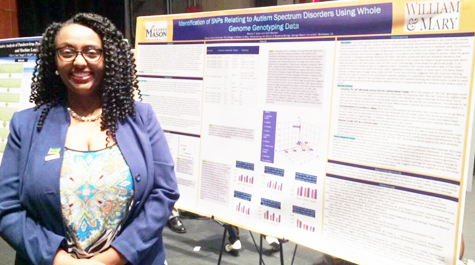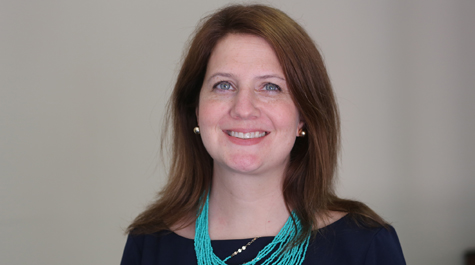A helping hand for neurodiverse students
Over the last two summers, William & Mary has welcomed 26 incoming freshmen and transfer students to campus for a weekend that sets the university apart from its peers.
Called the Neurodiversity Bridge Program, word of it has spread throughout Virginia’s higher-education community. William & Mary has invited some of its fellow colleges and universities to attend a summit this summer where it will discuss how they may expand their neurodiversity programs.
The Bridge Program is intended to support students with neurodiversity needs so they can succeed in an academic world that may have little understanding of what that term even means. According to Lesley Henderson, W&M’s assistant dean of students and director of student accessibility services, neurodiversity originally referenced autistic people. Now, she added, it includes people with autism, attention deficit disorder, attention-deficit/hyperactivity disorder, Tourette's syndrome and epileptic seizures disorder, among others.
“The idea is to ease students who are neurodiverse or neurodivergent or have different neurology into the campus of William & Mary so that they have a more tailored approach to what they need and how it is they take in information the best,” Henderson said.
{{youtube:medium|--xlcaQTzgU, Martha's story}}
To that end, participants in the Neurodiversity Bridge Program heard about resources available to them from the academic enrichment office, the counseling center and other W&M departments and offices. Students pay only for their transportation; the rest is cost-free to them, supported financially by the W&M Parents Fund.
“But most importantly,” Henderson said, “students get first-hand experience working with students at William & Mary who are their peer advisors. One of the goals was to offer students a kinder, gentler entry into William & Mary, to let them have a chance to get acquainted with the college before school is in session.”
The university will have much to share in addition to the Bridge Program, which again will be offered this summer. Under the umbrella of the Neurodiversity Initiative, students receive support from the office of the dean of students and the counseling center. There is a neurodiversity working group, composed of administrators, alumni, community partners, faculty, staff and students, that organizes campus events and programs in support of the Neurodiversity Initiative.
Students can receive help from Student Accessibility Services and the Cohen Career Center. In addition, there is a neurodiversity student group on campus, alumni of which were instrumental in working with Henderson to form the Bridge Program.
Martha Gizaw ’20, who was diagnosed at age 3 with autism and later with ADHD and generalized anxiety disorder, is currently serving as the undersecretary of neurodiversity for Student Assembly. In 2017, she came to W&M as a Jack Kent Cooke Foundation Transfer Scholar after attending Northern Virginia Community College for two years. What appealed to her about the university was the attention it pays to neurodiversity and the research being done on neurodiversity.
Her transition to the university was stressful because at community college she could not get extended testing time or other accommodations. W&M offered those aids.
“People here have been very friendly helping me with any academic difficulties I have,” she said. “The counselors have helped me cope better in a learning environment.”
A summer internship at George Mason University helped her to see that majoring in neuroscience or computer science wasn’t her best option.
“I came back to campus knowing that I could do an interdisciplinary major,” she said. “Since then, it feels like I have been doing well in randomized courses, and I don’t fit into any one box anymore.”
Gizaw was among the leaders for the programming the neurodiversity student group offered to commemorate April’s Autism Awareness Month. She co-hosted an event with an alumni speaker who is a member of the autism self-advocacy network based in Washington, D.C., presented a program on determining whether one qualifies for neurodiversity assistance, where they work and how autism, affects choosing a major and other decisions.
{{youtube:medium|lVaopsEoHDM, Lesley Henderson on neurodiversity at W&M}}
“I feel it is time for me to step up in my role in the neurodiversity community by becoming a leader in it,” she said when asked why she would undertake the additional stress of a leadership position to go with her academic schedule.
Gizaw offered some advice for a neurodiverse student walking into a college environment.
“Try to make the most out of it,” she said. “Try to get as much support as you can from people because your family’s advice is not enough. But be careful about the advice you accept from anyone.”
Henderson would agree. She is available to help students with needs under the Americans with Disabilities Act or who have diagnosed conditions that might need advocacy or support. For example, Henderson would reach out to a professor to explain that one of his or her students is so bothered by the brightness of fluorescent lights in the classroom that they must wear sunglasses to cope.
“We hope that as these students make their way through college, they find the resources that are useful to them,” she said. “There’s a range of students and how well they transition to college. The same can be said for students who consider themselves neurodiverse. They may have some additional differences in their experience, and we want to help them succeed here.”
 Skip to main content
Skip to main content


